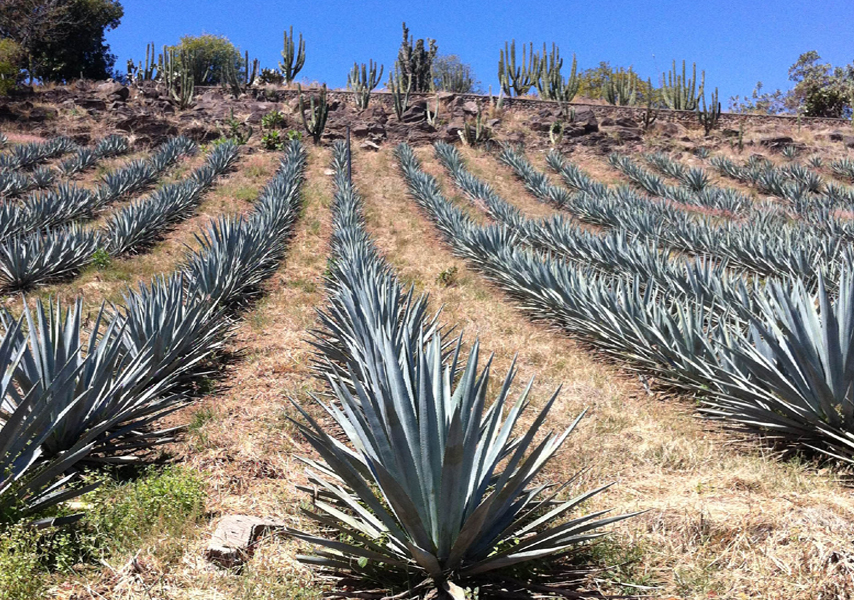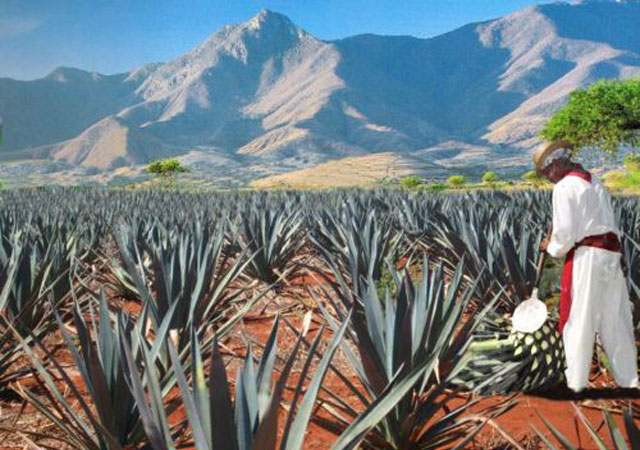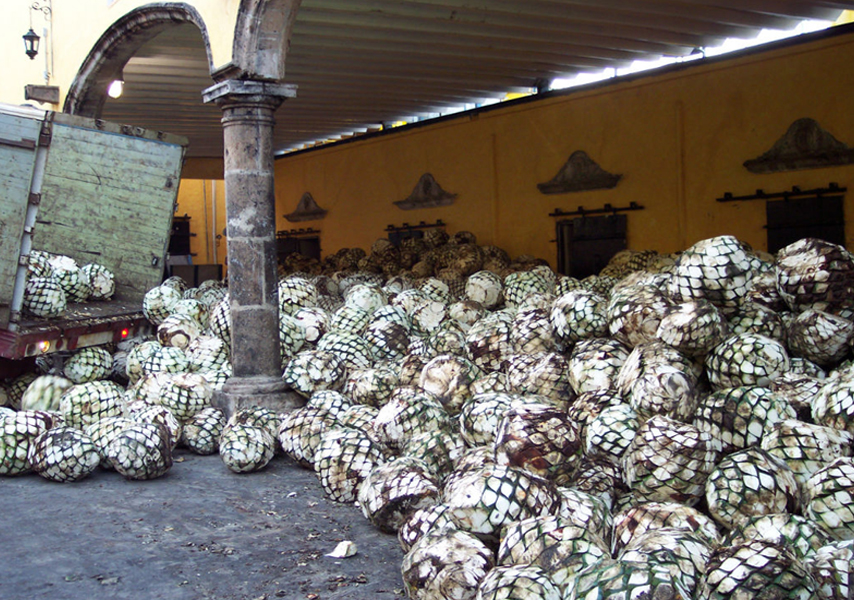Agave Nectar Sweetener
The agave plant, which is the raw material used to make tequila and sweeteners, contains fructans, non- digestible carbohydrates that help the body absorb calcium and magnesium. Studies have already shown that fructans promote growth of good bacteria in the intestines, prompting better absorption of minerals such as calcium and magnesium. And in a follow up study, researchers found that mice fed agave absorbed more calcium and significantly increased the levels of a protein that marks new bone tissue growth. Other sources of fructans include artichokes, onions, and garlic.
What is Agave Nectar
Agave nectar is sometimes called agave syrup or agave sweetener. Agave nectar has a taste and appearance similar to honey, making it a popular substitute for sugar or honey. There are two kinds of agave nectar: dark agave nectar and light-amber in color. Though the two can be used interchangeably, dark agave nectar has a stronger taste.
Agave nectar comes form the Agave (pronounced ah-GAH-vay) plant which is best recognized as the plant from which tequila is made (when fermented). The nectar made from the plant is known in Mexico as aguamiel, or "honey water." Agave has been used for thousands of years as an ingredient in food and as a folk remedy for its medicinal properties. The Aztecs mixed it with salt and used it for skin infections and wounds. The Aztecs also prized the agave as a gift from the gods and used the liquid from its core (a pineaple like shape) to flavor foods and drinks. Now, due to increasing awareness of agave nectar’s many beneficial properties, it is becoming the preferred sweetener of health conscious consumers, doctors, and natural foods cooks alike.
Is Agave Nectar Safe?
There has been some buzz swirling around agave nectar and whether the sweet cactus-nectar is good for our bodies or not. We want to help our readers be aware of the increasing number of fraudulent, poor-quality “agave” products being sold in common supermarkets around the country. The following article will educate you on fraudulent high-fructose agave nectar and its negative health consequences, as well as the benefits of using true organic agave nectar as a sweetener.
The Downside of High-Fructose Agave Nectar
Recent claims regarding agave nectar urge us to be aware of the type of agave we are purchasing. Many brands sold in the supermarket, claiming to be organic, are nothing more than refined fructose. Common forms of retail-refined agave syrup sold in supermarkets do not tell consumers what has been done to the syrup in the laboratory. While the label may claim that the agave is “organic and all-natural,” the label does not explain that the syrup has gone through an extensive process of chemical refining which changes the enzymatic structure of the syrup, converting it into a man-made chemical fructose.
Herein lies the main concern surrounding the nectar that many well-known nutritionists are recommending as a healthier sugar-substitute. There is a direct link between man-made chemical fructose and deadly degenerative diseases. Critics also note that once consumed, refined fructose is turned into triglyceride, which is essentially stored as body fat. And while high fructose agave syrup does not cause the extreme spikes in blood sugar levels like common white sugar, it does have possible associations to a spectrum of health-depleting conditions such as:
- Depletion of the body’s minerals
- Irritation of the liver
- Hardening of the arteries
- Tendency towards insulin resistance, a predecessor to diabetes
- Heart disease
- Weight gain, and even obesity
- Toxic effects is pregnant women
In a recent article on NaturalNews.com, author Rami Nagel, states that fake forms of refined-fructose agave. “lacks amino acids, vitamins, minerals, pectin, and fiber. As a result, the body doesn’t recognize refined fructose. Refined fructose is processed in the body through the liver, rather than digested in the intestine. Refined fructose robs the body of many micronutrient treasures in order to assimilate itself for physiological use. While naturally occurring fruit sugars contain levulose bound to other sugars, high fructose corn syrup contains “free” (unbound), chemically refined fructose. Research indicates that free refined fructose interferes with the heart’s use of key minerals like magnesium, copper and chromium.”
The Upside: Agave Nectar is Not Made Equally
Natural agave has been harvested traditionally in Mexico for hundreds of years. Ranking fairly low on the glycemic load scale, a small amount of the nectar provides a larger amount of sweetness than common sugar, and thus, a little goes a long way. The agave plant also contains saponins and fructans, phytochemicals associated with many beneficial and immune-boosting capabilities. (Journal of Ethnopharmacology, 1996; 52:175-7).
One of these fructans is known as inulin, a natural plant sweetener with an extremely low impact on blood sugar and cholesterol levels. The ancient Aztecs even used the nectar as a healing salve for wounds. What is more, compounds derived from blue agave have been studied for their potential utility for treating colon diseases like ulcerative colitis, irritable bowel syndrome and Crohn’s disease. Agave also holds high amounts of protein-building amino acids and alkaloids (Plant Foods Hum Nutr 2007; 62:133-8). Research indicates that minimally-processed agave does provide nutrients to the human body, and may even prevent chronic disease (Nutr Rev 2004; 62: 439-42).
It is also important to mention that not all agave products are created equal, and the dangerous high-fructose content cited by critics is not typical in all agave products. Roger Clemens, a professor at USC, has stated that: “Depending on how the syrup is processed, it may or may not contain more fructose.”
Agave Nectar & Fructose in many foods we eat.
Agave nectar is high in fructose, but so are many foods that we eat. And while it is true that agave is quite high in fructose, it is the most common form of sugar in all fruits. Dates, molasses, raisins, apples, honey, and even many vegetables and other plants are high in fructose. Fructose is a natural form of carbohydrate, and for thousands of years, it has been an important source of energy for the body.
In fact, fructose in live raw fruits is good for us! A scientific statement from The American Heart Association found that consuming limited amounts of fructose, in a pure form, had no negative effects on the majority of individuals [2A]. Other studies show that fructose, in limited amounts, may even reduce the risk of prostate cancer [2B].
Another study found that the beneficial fructans found in agave may help fight bone diseases such as osteoporosis, as well as other diseases such as diabetes and colon cancer [2C]. This research also suggested that fructans may promote the creation of beneficial gut bacteria, allowing for better absorption of calcium and magnesium (two important minerals for bone health).
Fructose & HFCS are not the same
There is no comparison between a natural form of fructose, such as in fruit or from agave, and the chemically-processed, pesticide-laden, genetically-modified High-Fructose Corn Syrup (HFCS). The fructose in agave is a slow release form of sugar. This means that, in comparison to HFCS, which spikes blood sugar levels, agave does not cause the stimulation insulin secretion that leads to harmful rises in blood sugar. What is more, the enzymatic processing of agave is very different from the process of High-Fructose Corn Syrup, which fabricates fructose out of the glucose made from the milled starch of corn.
For High-Fructose Corn Syrup, glucose chains in the starch are broken down into long chain lengths of glucose molecules. These long chains are less sweet, but offer easier viscosity and functionality than raw glucose.
Producers of HFCS are looking for this better viscosity and adaptability, as it allows them to add it, unnoticed, to virtually any substance. To do this, they dry the corn and mix it with water and sulfar dioxide.
From there, the starches are separated from the kernel, fiber and protein. The separated starch slurry is then processed at very high temperatures, mixed with acid, neutralized, and then treated with an enzyme to create a 42% fructose and 55% glucose syrup. It is these strong acids and caustic chemical additives that are believed to be related to mercury contamination in HFCS. Moreover, most HFCS is made from genetically-modified corn, adding yet another contaminant into the processing mix.
Organic agave nectar’s processing could not be further related from this aforementioned processing of High-Fructose Corn Syrup. Agave is processed through either the use of natural enzymes, or through the use of thermal hydrolysis. These processes are essentially used only to evaporate the nectar from the liquid juice that is extracted from the plant. The processing of agave is done in the exact same way in which bees make honey, whether through a natural enzyme in the bee’s stomach, or when they fan their wings to evaporate the natural water out of the sweet liquid before capping into the honey comb.
In essence, no refinement, beyond the evaporation of water, occurs in agave processing. To put this in perspective, one must consider that hydrolysis is a 100% natural process of molecule separation. The human body does it every day!
Not all agave nectar brands are created equally
It is true that some lower-quality forms of agave have been put through extensive cooking processes that alter the chemical structure of the nectar, making is nothing more than man-made fructose.
One thing to point out is that Mexicola is made from an organic raw agave that is 100% organic-certified by the USDA. The Mexi-Cola Compny secures the agave sweetener used for Mexicola Cola Beverage and their line of products from Mexican Agave growers who pride in making quality organinc certified agave sweetener for Mexicola and harvest the nectar from living plants and do very minimal amounts of processing on the nectar. Mexi-Cola Quality Control personel regularly visits their Mexican partners and suppliers to ensure optimum quality.
Agave has a rich history that proves its “safety”
For hundreds of years, Mexican traditional societies have revered this plant. It was a natural form of sugar that was eaten seasonally, in limited amounts, and in a raw form. This plant, high in vitamins and minerals, was even used by traditional medicine cultures as a digestive support, and a blood purifier.
Extreme examples lead to extreme views
Mexi-Cola warns against extreme views drawn from extreme examples designed to frighten people, not educate them. Educate yourself on the facts, “What is a ‘healthy’ sweetener? One that you use moderately and sensibly.”



